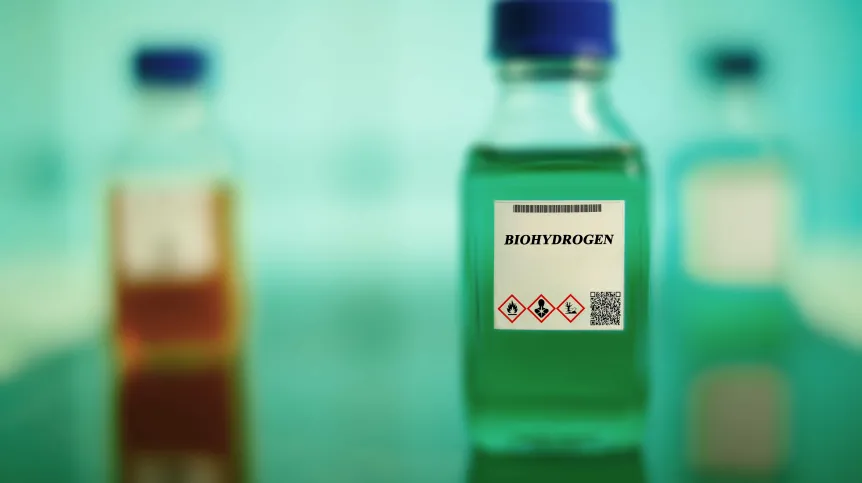
Biohydrogen is gaining importance as a potential alternative fuel source. One of the possibilities of its production is to use sewage sludge from food waste processing. Scientists from the University of Silesia have improved this method and enhanced it with nanotechnology.
Biohydrogen is hydrogen gas produced biologically, often using microorganisms. It is considered a form of renewable energy because its production is linked to biological processes, usually involving the fermentation of organic compounds. The most common methods include dark fermentation (anaerobic microbial decomposition of organic compounds by bacteria, a by-product of which is hydrogen) and photosynthetic processes (autotrophic microorganisms such as green algae and cyanobacteria can produce hydrogen in the process of splitting water molecules into oxygen and hydrogen in photosynthesis).
The main potential applications of biohydrogen include energy production, transport and industrial processes. 'Hydrogen is a clean and efficient fuel - it can be burned or used in fuel cells to generate electricity, or as a fuel for vehicles. The by-product of hydrogen combustion is water vapour, which makes it a clean source of energy,’ says Dr. Mohamed Saad Hellal from the Department of Environmental Biotechnology at the Faculty of Environmental and Energy Engineering of the Silesian University of Technology and the National Research Center in Egypt.
He adds that biohydrogen is also a valuable industrial raw material, used in processes such as ammonia production and petroleum refining. 'In addition, the production of biohydrogen from renewable resources can contribute to reducing greenhouse gas emissions compared to traditional hydrogen production methods based on fossil fuels,’ he adds.
One of the new methods of biohydrogen production involves using industrial sludge generated in food industry wastewater treatment processes. 'This sludge, often treated as waste, is a rich source of organic material, which makes it attractive for reuse. We used sewage sludge from the chemical treatment of industrial wastewater from a factory that produced food additives,’ says Dr. Saad Hellal.
To increase the efficiency of biohydrogen production with this method, scientists from the Silesian University of Technology added a nanostructured catalyst to the biological process. 'We used conductive metal nanoparticles containing silver and copper. This is the first time they have been used in this type of process,’ Dr. Saad Hellal continues.
The addition of nanoparticles caused a change in the community of microorganisms producing biohydrogen, and (in appropriate concentrations) increased the rate of its production.
'Bacteria from the Proteiniphilum and the uncultured Azovibrio genera dominated in the bioreactors with nanoparticles. Both bacteria had already been identified as biohydrogen producers, but in this study they began to dominate in the bioreactor only when their +favourite+ substrates appeared - substances from which they could produce biohydrogen most effectively. For both types of bacteria it is propionate, and for the first microorganism also acetate. These +delicacies+ are products of other biochemical transformations carried out by other members of this bacterial team. That includes microorganisms that did not dominate in the reactor, but thanks to their work, substances were produced that powered the functioning of effective producers of this gas,’ says Dr. Aleksandra Ziembińska-Buczyńska from the Department of Environmental Biotechnology at the Faculty of Environmental Engineering and Energy, Silesian University of Technology.
According to Mohamed Saad Hellal, the implementation of this technology in food processing plants and existing wastewater treatment plants can bring economic and environmental benefits.
He ‘says: Although the study was conducted at the level of basic research, our solution has great potential for use on a larger scale, especially in the context of global efforts for sustainable development and carbon footprint reduction. The possibility of transforming waste into a valuable energy source can reduce dependence on traditional energy sources and contribute to reducing greenhouse gas emissions.’
Find out more in the source article.
PAP - Science in Poland, Agnieszka Kliks-Pudlik
akp/ agt/ kap/
tr. RL













